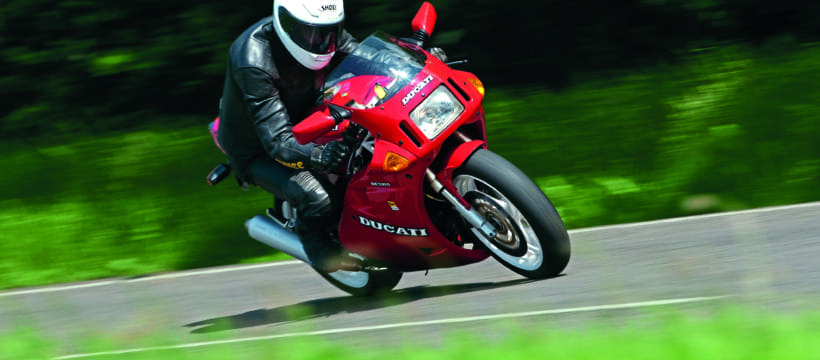From the 851 to the 1198 Panigale, the four-valve Desmoquattro engine and its successor, the Testastretta, have helped Ducati keep its reputation as one of the greatest makers of sports bikes in the world. That’s not bad going for an engine that can trace its history back to a 500cc V-twin from the late Seventies.
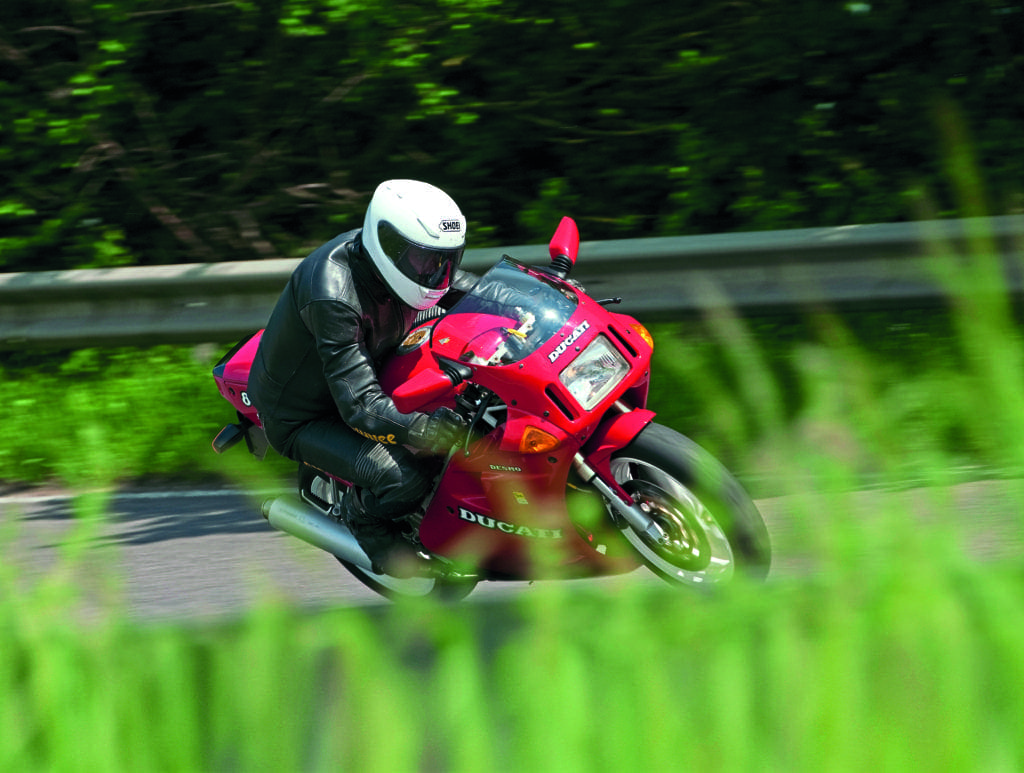
When the Castiglioni brothers from Cagiva bought Ducati in May 1985 they needed a new powerful engine and after rejecting a V4 ‘BiPantah’ they settled for the liquid-cooled, multi-valve, fuel-injected evolution of their existing 750cc V-twin, partly designed by Cosworth, not least because it fitted into a modified trellis frame then used on the air-cooled, two-valve Paso.
The water-cooled Desmoquattro engine was first seen more than 30 years ago in 1986 as a 748 endurance racer ridden by Virginio Ferrari, Juan Garriga and Marco Lucchinelli at the Bol d’Or Endurance Race and then it promptly became the road going 851 in 1987. The racer engines were built on 750 F1 Pantah cases, but these were beefed up for later production.
Enjoy more Classic Bike Guide reading in the monthly magazine.
Click here to subscribe & save.
Ducati was very short of money in the late Eighties and up until 1996 – this meant that some componentry, even on top of the line bikes like the 851 and 888, can be suspect – though fortunately this tends to apply to items like switches, wires and hoses, rather than engine parts and brakes.
Want to read on? Then subscribe to Classic Bike Guide and read our magazines online!
The 851 uses the trellis frame design that marks out every modern Ducati, from the 600 Monster to the 1198 – though the Desmoquattro frames are stronger and of a very different geometry to the air-cooled models. Buyers don’t need to worry about this bit of the design – it might not be the aluminium beam sported by its Japanese rivals but it’s easier to repair and more stable than most, plus there’s no danger of any fatigue with the frame being ridiculously strong.
Cagiva, which owned Ducati at the time, considered dropping the famous name and badging the bikes as Cagivas. Common sense prevailed, though you do still see evidence of Cagiva’s involvement in Nineties Ducatis with the company’s elephant logo cast into some of the parts, including the original silencers.
For more content, why don’t you like our Facebook page here, or follow us on Instagram for a snippet of our striking pictures!
Running a Desmoquattro
We are going to concentrate on the first three generations of Desmoquattro, the 851/888, the 748/916 and the 749/999 models. Ducatis can handle like a dream, are light and have a tendency to vibrate. While this doesn’t affect the rider too much on the Desmoquattro-engined bikes, nuts and bolts can work loose. It’s a good idea to go over the bike regularly to make sure nothing has come adrift. Eighties and Nineties Ducatis are an assemblage of parts as much as an engineered whole and have bits bolted on rather than incorporated into a finished design. Things can fall off if you don’t go around the bike regularly with threadlock and spanner. For example, there are two bolts that hold the mounting pin on the bottom of the fuel tanks and these can become dislodged, falling into the front injector intake with catastrophic results.

Fairings and Panels
If you are thinking of buying a Desmoquattro, the fairings and panels on a Ducati are well worth taking a careful look at. The early originals are fairly thick and made of fibreglass, which makes them harder wearing and easier to repair in the event of a spill. Tell-tale signs of a bike being used on the track are the fitting of thinner, less substantial racing panels. Along with lockwired bolts, these are signs of a bike that will have been thrashed.
The fairing panels are fixed in place on some models with Dzus fasteners, but on others with Wellnuts. This is a rubber device shaped like a top hat with a captive nut inside. The theory is that the captive nut is pulled into the rubber as it is tightened holding everything in place inside tubes and lugs. As they get old, the rubber loses what little adhesive properties it used to have and they pop out, leaving fairing panels flopping about or worse, and the expensive fairing retaining bolts and washers get lost on grass verges. More than a few owners fit longer bolts and attach proper nuts to the other end, or add a dab of superglue to the Wellnut in the vain hope they won’t fall out.
Want to read on? Then subscribe to Classic Bike Guide and read our magazines online!
Engine
The Desmoquattro is a solid unit with only one major failing – the plating on the rocker arms can deteriorate. Richard Green, from North Wales Ducati specialists Moto-R, said: “You should check the shims and the rocker arms, as they lose their plating. Rocker arms are around £140 each and there are eight per cylinder, but the issue only affects the inlet arms. You can’t see this when doing the shims. To check them you have to take the cams out and that’s a job that needs to be done by someone who knows what they are doing. Apart from that the engines are good.”
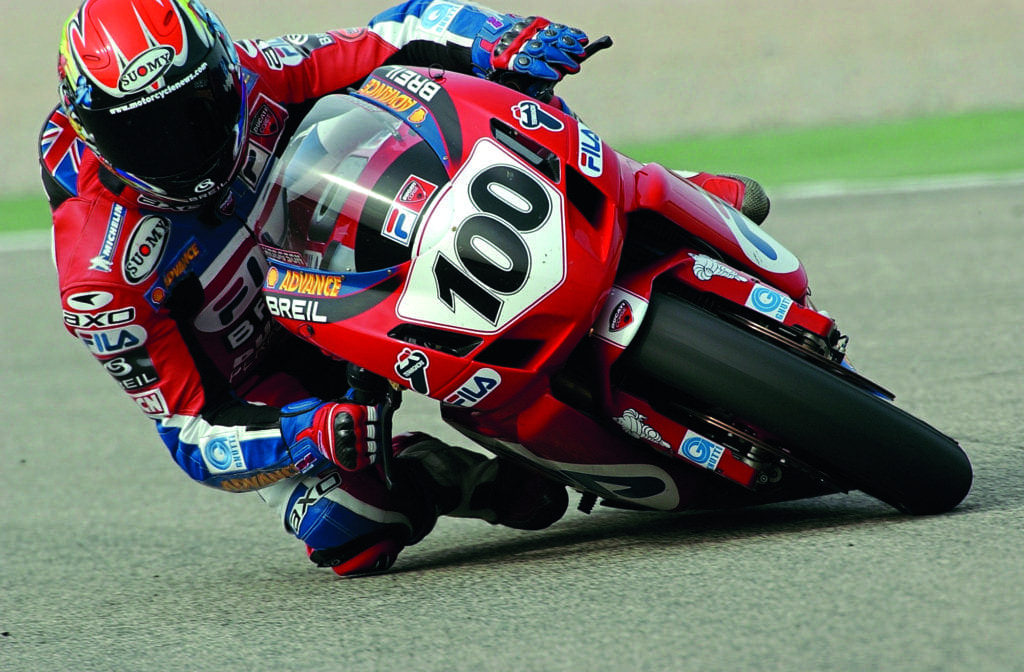
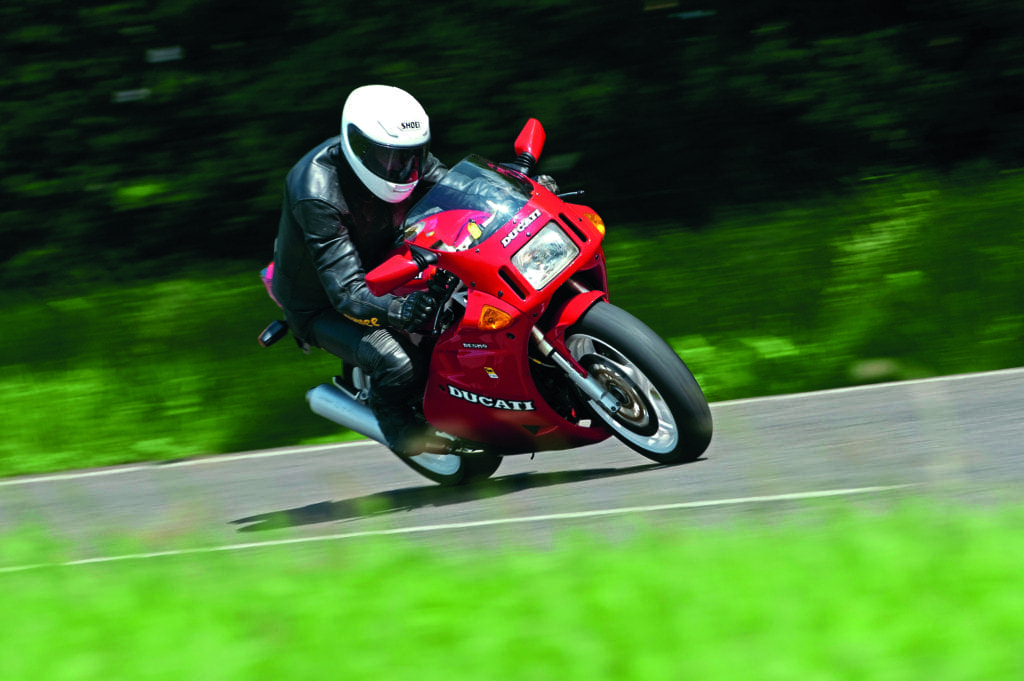
For more content, why don’t you like our Facebook page here, or follow us on Instagram for a snippet of our striking pictures!
The cams on the Desmoquattro and Testastretta are driven by belts. It doesn’t matter what the previous owner might say, unless you are buying from a dealer who can prove it, change the belts as soon as you can. They are not overly pricey and once the fairing panels are removed it is a simple job to replace them for the reasonably skilled home mechanic who can follow a manual. Or find a dealer to do it for you, as it’s not a time-consuming job. Even if you have a receipt for belts that shows the bike has only covered a few miles since fitting, change them anyway, as they could have been standing for a long time. A snapped belt will ruin your engine. Change the belts every two years or 5000-7000 miles. With an engine derived from mechanical genius rather than a reliance on technology, there isn’t a lot that can go wrong otherwise.
In 1994, the company introduced the Ducati 916. Designed by Massimo Tamburini, it was stunning, with striking new bodywork that had aggressive lines, under-seat exhausts, and a single-sided swingarm. Along with the 748, 996 and 998 that followed, the 916 is widely regarded as being one of the most beautiful motorcycles ever created.
Want to read on? Then subscribe to Classic Bike Guide and read our magazines online!
The powerful 916 is the crème de la crème, and is rapidly rising in value as a collector’s item, but don’t rule out the 748, as this is a forgotten gem with usable power on tap. This sleeved down, shorter-stroke 916 might need to be revved hard to get the best out of it, but if you can reach the limits of either the torquey 916 or the buzzy 748 you’re a highly sophisticated rider and should consider taking it up for a living. The 748 is also built onto the same crankcases as the 916, and this makes the smaller engine considerably tougher. The same goes for the cycle parts, which are identical, but won’t be put under as much stress. Most popular on the second-hand market are the early 916 made up until 1998, which featured the italicised logos rather than the later blocky graphics. The 916 or 748 are the easiest of the Desmoquattro bikes to service. Later bikes don’t share as many parts across the range as the early models.
Check the coolant reservoir tank that sits under the front of the fuel tank and has a tendency to crack. Watch for any signs of coolant spray around the headstock area and get it replaced right away if you detect any leakage. Be especially careful of any spray getting on the faces of the gauges, as it will ruin the plastic lenses. These can also be an issue, as the plastic does tend to deteriorate after two decades. A cracked lens is more likely to be a result of plastic fatigue than accident damage.
Clutch
The air-cooled clutch is famously noisy, so don’t worry too much about noise from that area unless it sounds particularly mechanical. But the hydraulic master cylinder needs careful attention. Keep an eye on the fluid level in the clutch master cylinder and for leaking fluid around the footpegs as the slave cylinder seals can fail, leaving you clutchless. One popular after-market mod is an open carbon fibre clutch case, which can look good, but increases noise, and should you end up sliding down the road a casing is a lot cheaper to replace than a clutch mechanism.
Wheels, Suspension and Brakes
Some of the parts away from the engine on the early four-valves are interchangeable with those on the more common SS models, including wheels, controls and headlights.
On the 851 and 888 the Brembo brakes are excellent and can be replaced with items from SS models built around the same time. Ducati has stuck with Brembo with good reason, for a production motorcycle they are as good as you can get. The wheels are similarly interchangeable with some contemporary SS and Monster items.
On the single-sided swingarm rear wheel on the 916 range there can be a problem with the cush drive. These rubber cush drives on the rear sprocket carrier have a steel ring that can detach from the rubber and grind down the rear axle eccentric adjuster. The first sign of trouble will be aluminium swarf on the swingarm. Richard Green recommends replacing the sprocket carrier with one from JT or Renthal, which has a retaining lip on the inside to stop this from happening. The rear axle is okay, but the ride height adjuster can seize up and needs to be checked – applying heat to the rose joints can free these up.
Crash damage can be spotted by looking for missing lock stops or damage to the edge of the radiator. Many bikes are fitted with carbon fibre swingarm covers, which might have been added to cover a multitude of sins incurred in a crash. Another giveaway are the clip-ons – these are fitted with a steel lug that locks them into place in a slot on the alloy headstock. In a crash that bends the clip on, the steel will tear away the alloy.
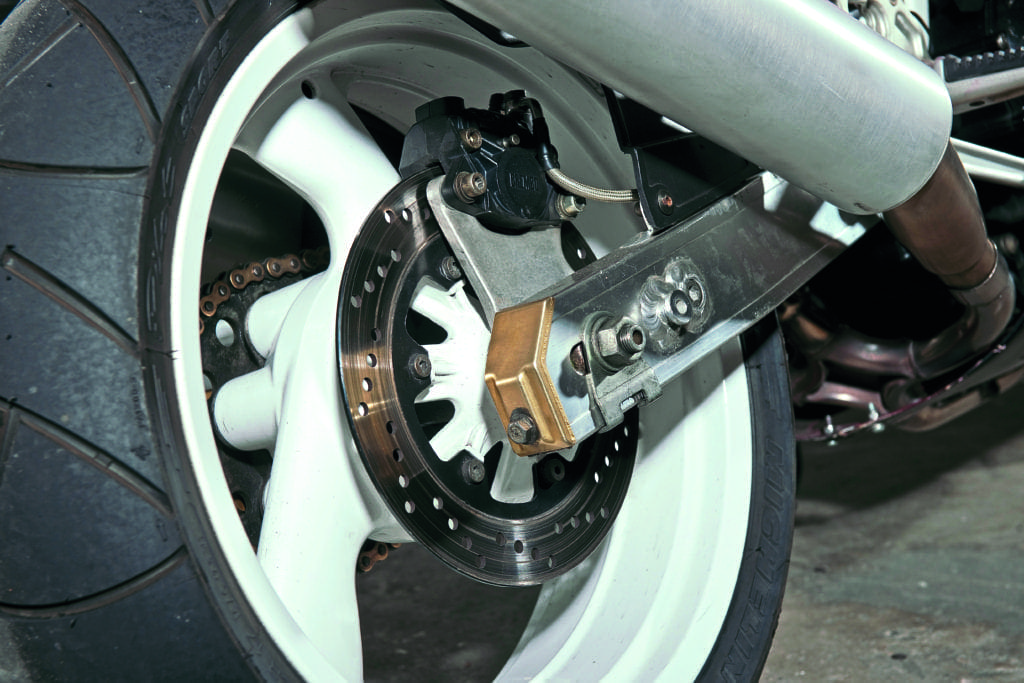

Petrol Tanks
The 851, which was very much a prototype initially, is fitted with an aluminium petrol tank while the 888 that followed it has a steel tank. These tanks do have a tendency to rot from the inside out. Richard Green, from Moto-R, says this can be solved by cutting the bottom out of the tank and re-welding it, but with so many early Desmoquattros now left standing for long periods it is an increasing issue. Oddly, the problem does not seem to have continued into the 916 range, which also has a steel tank. The 851 and 888 also have the fuel pump and filter mounted on clips inside the tank, which are only accessible by removing the filler and this can be fiddly to deal with. From the 916 on the pump is mounted on a removable plate in the bottom of the tank.
If ethanol-heavy petrol is left in a Ducati tank, it will attract water which, in turn, can get sucked into the petrol pump inside the tank through the filter. Water passes more quickly through the pump than petrol does, which causes the pump to run faster and this can then overload the whole bike’s charging system.
If water sits in the pump, expect it to corrode quickly. Change the filter regularly and drain the tank if it is going to be left standing. Where possible, change the fuel lines both inside and outside the tank for good quality items. Braided stainless steel is worth the money.
For more content, why don’t you like our Facebook page here, or follow us on Instagram for a snippet of our striking pictures!
Advert
 Enjoy more Classic Bike Guide reading in the monthly magazine. Click here to subscribe.
Enjoy more Classic Bike Guide reading in the monthly magazine. Click here to subscribe.


